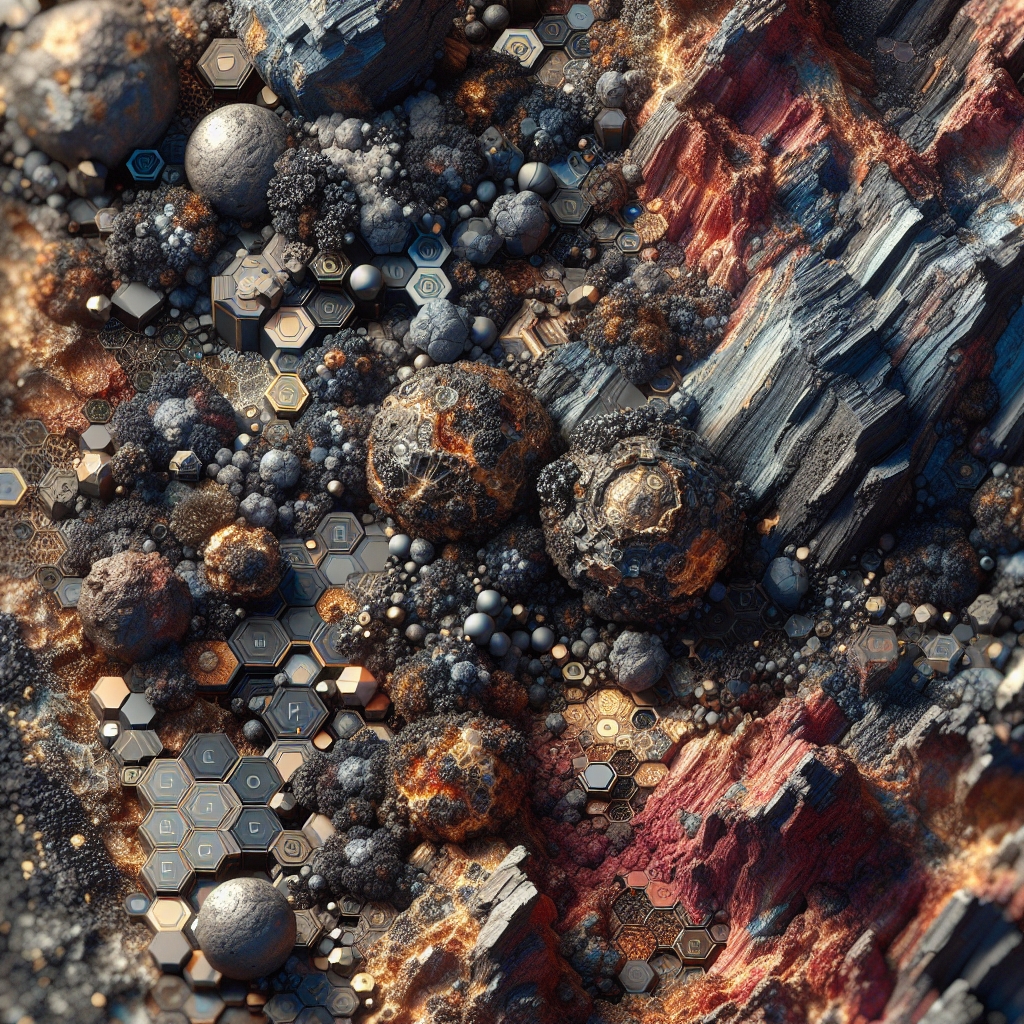Rare Earth Elements (REEs) are a group of 17 chemically similar elements that are critical in various high-tech applications, including electronics, renewable energy technologies, and advanced materials. Their unique properties make them essential for the production of magnets, catalysts, and phosphors. This article explores the distribution of REEs in volcanic rocks, examining their geological significance, the processes that lead to their concentration, and the implications for resource exploration and environmental management.
Chapter 1: Understanding Rare Earth Elements
Rare Earth Elements consist of the 15 lanthanides, along with scandium and yttrium. These elements are not actually rare in terms of abundance in the Earth’s crust; rather, they are rarely found in economically exploitable concentrations. The lanthanides include elements from lanthanum (La) to lutetium (Lu), while scandium (Sc) and yttrium (Y) are often grouped with them due to their similar chemical properties.
REEs are characterized by their high atomic numbers and unique electronic configurations, which contribute to their distinctive chemical behavior. They are typically found in minerals such as bastnäsite, monazite, and xenotime, which are often associated with igneous and metamorphic rocks. The geological processes that lead to the formation of these minerals are complex and involve a combination of magmatic differentiation, hydrothermal activity, and sedimentary processes.
The demand for REEs has surged in recent years due to their critical role in modern technology. For instance, neodymium (Nd) is essential for the production of strong permanent magnets used in electric vehicles and wind turbines, while europium (Eu) is a key component in phosphors for LED lighting and displays. As a result, understanding the distribution of REEs in various geological settings, particularly in volcanic rocks, has become increasingly important for both economic and environmental reasons.
Chapter 2: Volcanic Rocks as Hosts for Rare Earth Elements
Volcanic rocks, formed from the solidification of molten lava, are significant sources of REEs. The processes involved in the formation of these rocks can lead to the concentration of REEs in specific mineral phases. There are several types of volcanic rocks, including basalt, andesite, and rhyolite, each with distinct mineralogical and chemical characteristics that influence REE distribution.
Basalt, the most common volcanic rock, is typically rich in iron and magnesium and can contain significant amounts of REEs, particularly when derived from mantle sources. The formation of basaltic magma often involves the partial melting of the Earth’s mantle, which can concentrate REEs due to their incompatibility during crystallization. As the magma ascends and cools, it can crystallize into minerals such as olivine, pyroxene, and plagioclase, which may incorporate REEs into their structures.
Andesite, which forms from the mixing of basaltic and more evolved magmas, can also host REEs. The presence of more silica-rich components in andesite can lead to the formation of minerals such as amphibole and biotite, which are known to contain REEs. The evolution of andesitic magmas through processes such as fractional crystallization and magma mixing can enhance the concentration of REEs in the resulting volcanic rocks.
Rhyolite, the most silica-rich volcanic rock, is often associated with explosive volcanic eruptions. The high silica content of rhyolitic magma can lead to the formation of a variety of minerals, including quartz, feldspar, and zircon, which can also host REEs. The concentration of REEs in rhyolitic rocks is often influenced by the degree of differentiation and the presence of hydrothermal fluids that can mobilize and concentrate these elements.
In addition to the primary volcanic rocks, the alteration of volcanic rocks through weathering and hydrothermal processes can further enhance the concentration of REEs. Secondary minerals such as clay minerals and iron oxides can form during weathering, and these can also host REEs. Hydrothermal systems associated with volcanic activity can lead to the formation of mineral deposits rich in REEs, often in the form of veins or disseminated mineralization.
Chapter 3: Implications for Resource Exploration and Environmental Management
The exploration for REEs in volcanic rocks has significant implications for resource management and environmental sustainability. As the demand for REEs continues to grow, understanding their distribution and concentration in volcanic environments is crucial for identifying economically viable deposits. Geologists and mineralogists employ various techniques, including geochemical analysis, remote sensing, and geological mapping, to locate and assess potential REE resources.
One of the challenges in REE exploration is the environmental impact associated with mining and processing these elements. The extraction of REEs often involves the use of toxic chemicals and can lead to the generation of hazardous waste. Therefore, it is essential to develop sustainable mining practices that minimize environmental degradation and promote the responsible use of resources.
Additionally, the recycling of REEs from electronic waste and other sources is becoming increasingly important as a means of reducing reliance on primary sources. The development of efficient recycling technologies can help recover REEs from discarded products, thereby reducing the environmental footprint associated with mining and processing.
Furthermore, understanding the geological processes that lead to the concentration of REEs in volcanic rocks can inform environmental management strategies. By identifying areas with high potential for REE deposits, stakeholders can make informed decisions regarding land use, conservation, and resource development. This knowledge can also aid in the assessment of potential environmental risks associated with mining activities, allowing for the implementation of effective mitigation measures.
In conclusion, the study of Rare Earth Elements in volcanic rocks is a multifaceted field that encompasses geology, mineralogy, and environmental science. As the demand for these critical elements continues to rise, understanding their distribution and the processes that lead to their concentration is essential for sustainable resource management. By balancing the need for REEs with environmental considerations, we can ensure that these valuable resources are utilized responsibly for future generations.

